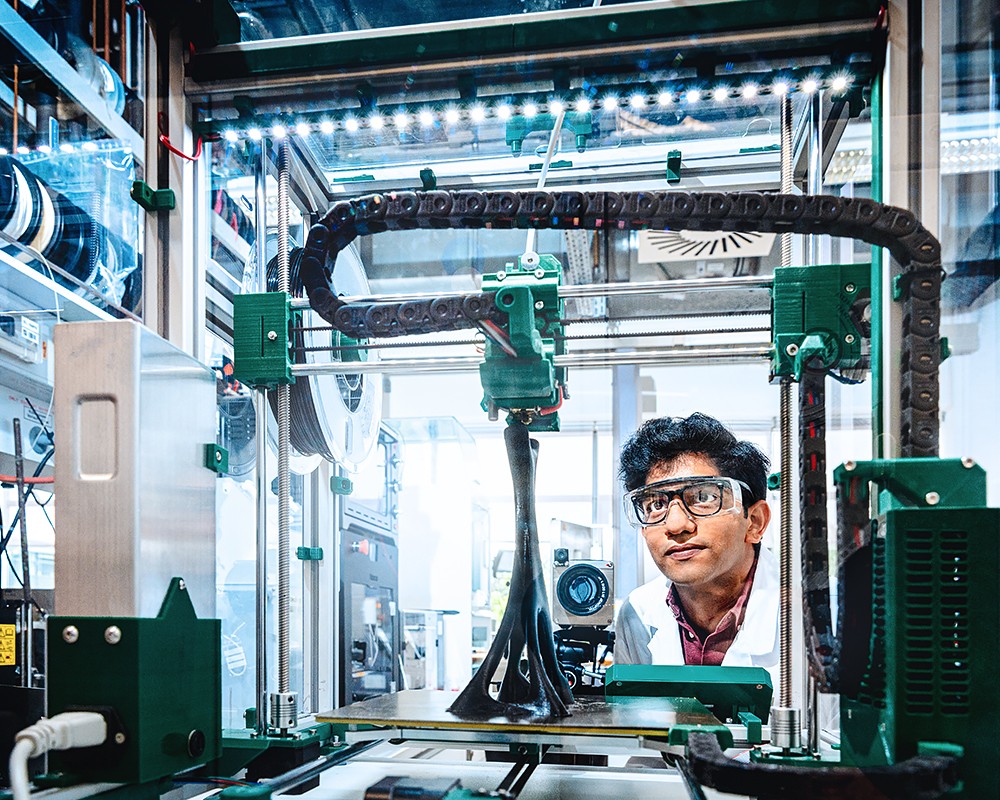The extent of the change in shape of the printed objects is dramatic: they can shrink by up to 63 percent. In the future, 4D manufacturing technologies could be used in applications where workpieces are only intended to fulfill their purpose after undergoing a predefined transformation, such as connecting elements in the assembly of components, e.g., in the fields of medical technology, mechanical engineering, automotive, or aviation.

3D printing is all the rage, as this additive manufacturing technology offers numerous advantages. For example, products and demonstrators can be customized and are quickly available. A team of researchers at Fraunhofer CPM has added another major benefit: it produces printed objects using what is known as 4D printing. This technology adds the dimension of time (1D) to the dimension of space (3D). This makes it possible to print objects from shape memory polymers that can change their shape at a later point in time by heating them – and in a truly remarkable way: rod-shaped samples about four centimeters long shrink by up to 63 percent. Curves can also be created in a targeted manner. “We started with a relatively simple rod geometry and then became more complex by also producing hollow cylinder and hollow cuboid samples,” says Dr. Thorsten Pretsch from the Fraunhofer Institute for Applied Polymer Research IAP, who is coordinating the project as part of Fraunhofer CPM. “For all the geometries investigated, we specified the desired material behavior in advance.”